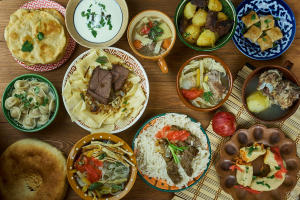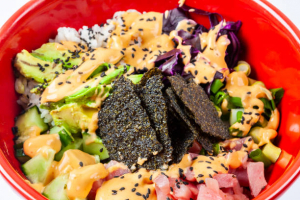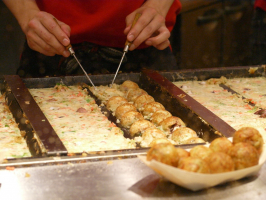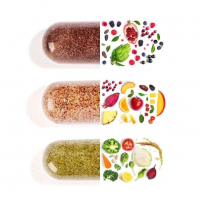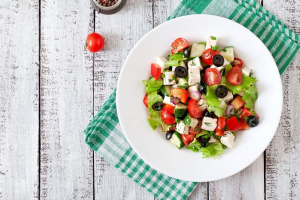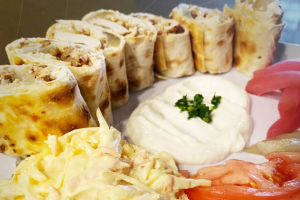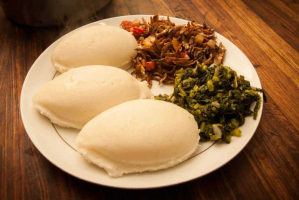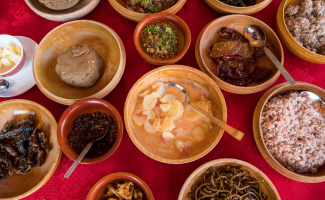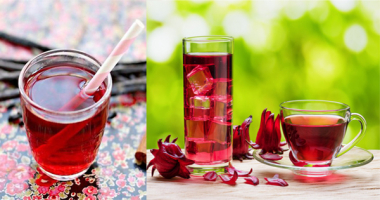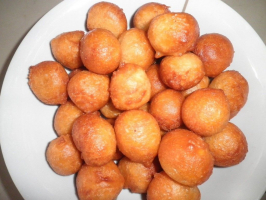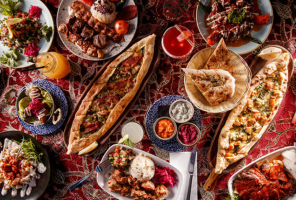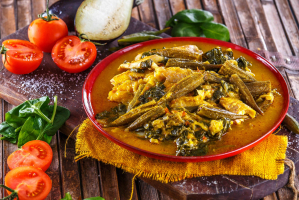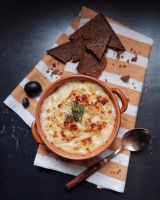Top 15 Best Serbian Foods
Belgrade is a city with a rich cultural history, and Serbian cuisine reflects this. Many different cultures, both in Europe and from other parts of the world, ... read more...have influenced Serbian cuisine. Serbian cuisine is unique, making it an excellent choice for Travelers looking to try something new while visiting this beautiful Southeast European country. Toplist has collected a list of the top 15 best cuisines in Serbia.
-
Ajvar in Serbia is a vegetable relish made primarily of red bell peppers and eggplant. It is popular in traditional restaurants throughout Serbia, Bosnia and Herzegovina, Croatia, and North Macedonia, and it originates in the Balkans of southeastern Europe.
Ajvar is commonly served with Serbian bread, such as lepinja or pogaa, in Serbia. It's commonly served as a side dish with grilled meats or fish, Serbian hamburgers (pljeskavica), and grilled meat sausages (Ćevapčići ).
Aside from roasted red bell peppers and eggplant, typical Serbian ajvar ingredients include garlic, olive oil (or sunflower oil), lemon juice, white vinegar, salt, and ground black pepper. Traditionally made in mid-autumn when peppers are at their peak, ajvar is typically made in large batches and stored in jars for several months.
If you plan a trip to Serbia in the future, try this dish at least once. Your trip will not be complete without trying this dish. Many visitors are surprised by its unique taste and say they had a good experience with it.
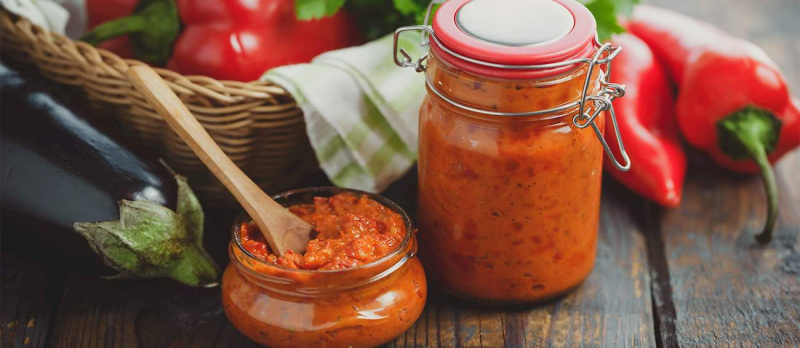
https://www.tasteatlas.com/ 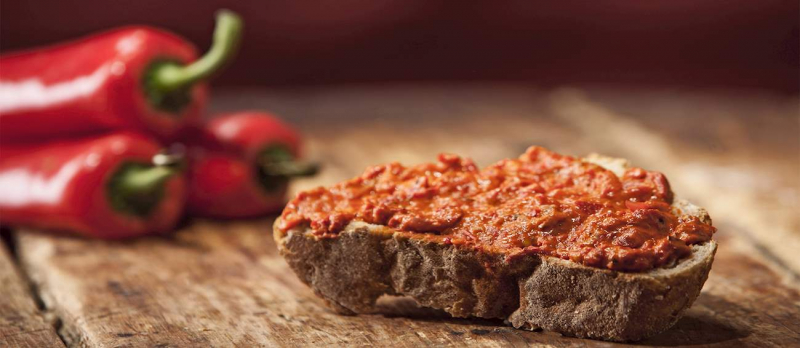
https://www.tasteatlas.com/ -
Punjen refers to something stuffed, so punjene paprike translates as "stuffed pepper." It is a type of dolma, which is a family of stuffed vegetable dishes popular throughout the Balkans, South Caucasus, Central Asia, and the Levant.
Punjene paprike is a type of dolma that is made from hollowed-out sweet peppers that have been stuffed with rice, meat, and other ingredients. The stuffed peppers are cooked and served in a tomato paste, onion, olive oil, and seasoning sauce.
Punjene paprike is a delicious Serbian dish that can be served as a side dish or as a main course, usually with boiled potatoes on the side.
Try this delicious dish at least once if you plan a trip to Serbia in the future. Your trip will not be complete unless you try this dish. Many visitors are pleasantly surprised by its distinct flavor and report having a pleasant experience with it.
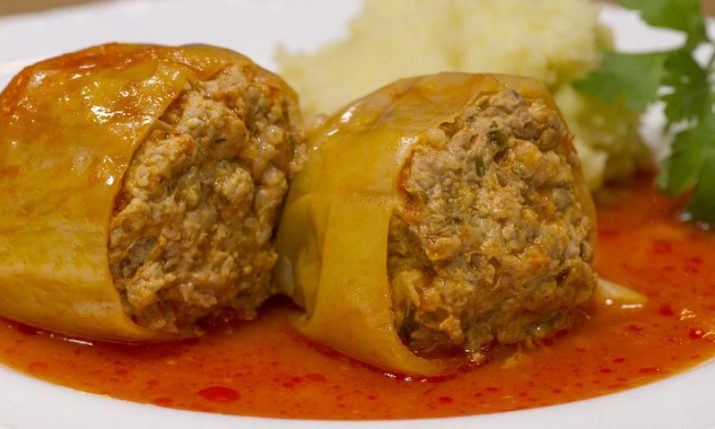
croatiaweek.com 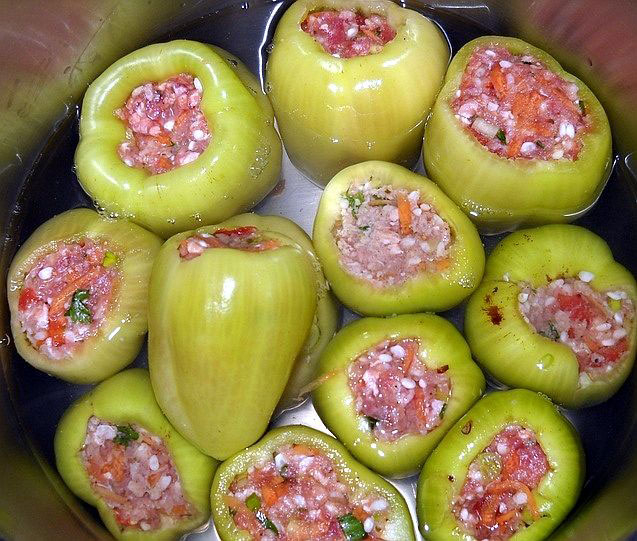
domacica.com -
Sarma is a type of dolma made from the same ingredients. Rather than being stuffed into hollowed-out vegetables, the ingredients are wrapped in pickled cabbage leaves and cooked over sauerkraut. The word sarma comes from the Turkish language and means "wrapped" or "rolled."
Sarma, like punjene parike, is a popular and beloved Balkan dish. Apart from the Balkans, it is popular in many countries in Central Europe, the South Caucasus, and the Middle East. It's a hearty dish that can be enjoyed any time of year, but it's especially popular in the winter and around the holidays.
Ground meat, rice, and raw onions are used to make sarma stuffing, which is similar to punjene paprike. The filling is wrapped in pickled cabbage leaves and slowly cooked in a clay pot with smoked meat and tomato sauce over a bed of sauerkraut.
Lots of travelers highly recommended this dish as one of the Serbian must-try foods.
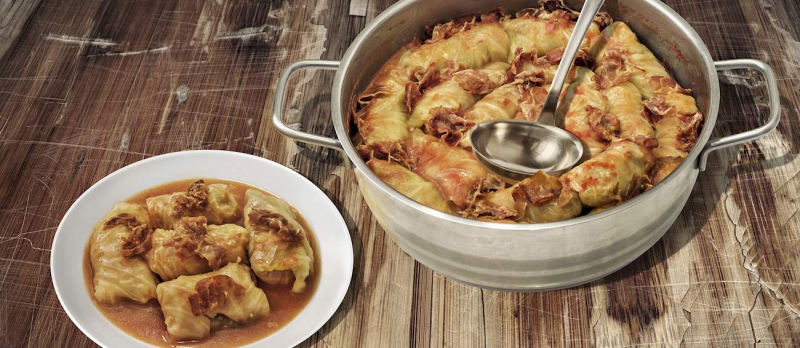
https://www.tasteatlas.com/ 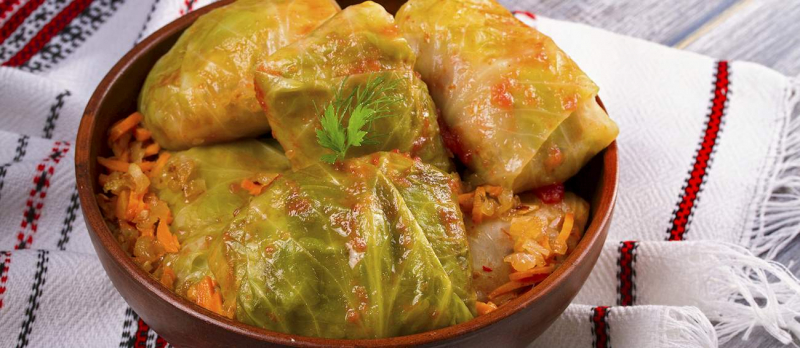
https://www.tasteatlas.com/ -
Although it is common in Croatia, Slovenia, and Macedonia, gibanica is most closely associated with Serbia. It's a traditional pie-like dish made with phyllo dough (occasionally replaced with yeast dough) and a creamy cheese and egg mixture.
Gibanica is a Serbian cheese pie that is made with phyllo dough, white cheese, and eggs. It's a popular Balkan dish with many variations ranging from sweet to savory, simple to elaborate. Gibanica is a popular Serbian dish that is widely considered to be a national dish. Depending on the region and personal preferences, this pie-like dish can be made sweet or savory.
The most popular version of this traditional Serbian dish is known as gužvara, which means "crumpled." The filo pastry is crumpled and soaked in a mixture of cheese, eggs, milk, lard, salt, and kajmak – a thick cream made from cow or sheep milk. The soaked pastry sheets are then layered and baked in an oven.
Gibanica, traditionally eaten with yogurt, is a versatile dish that can be enjoyed at any time of day. It's a popular breakfast or dinner dish in Serbian households, and it's also served as an appetizer or snack.
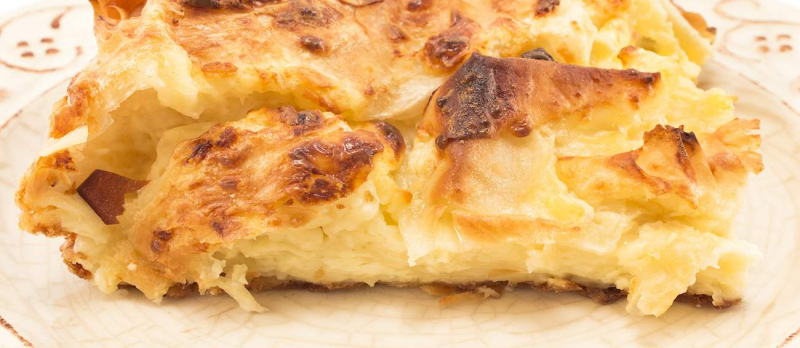
https://www.tasteatlas.com/ 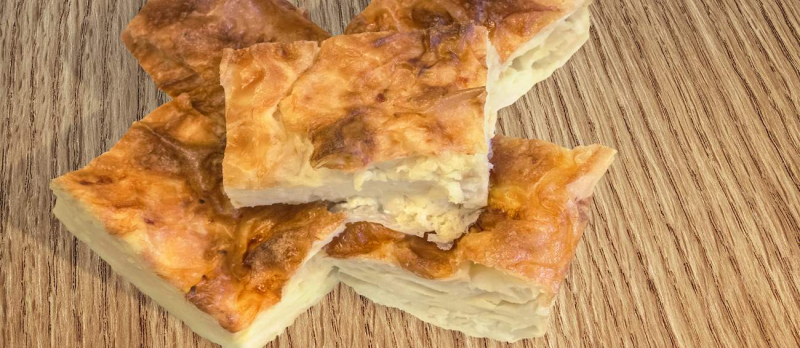
https://www.tasteatlas.com/ -
Prebranac is a type of bean stew from Serbia. It's a filling dish made with baked beans, onions, garlic, sweet Hungarian paprika, bay leaves, and sunflower oil.
Prebranac is a dish made of baked beans with onions and Hungarian powdered paprika, as well as oil and water. The finished product should be slightly dry, with onion-coated beans developing a creamy texture. Farmers used to make prebranac during the cold winter months.
Prebranac at first is a traditional Serbian dish. It is a cheap and filling meal that farmers used to get them through the long winters. Recipes vary, but it's typically made with white beans and served as an appetizer or main dish, often with a side of warm crusty bread.
Today, this delicious dish is traditionally served as a side dish to main courses, but it can also be eaten on its own, preferably with a slice of crusty bread on the side.
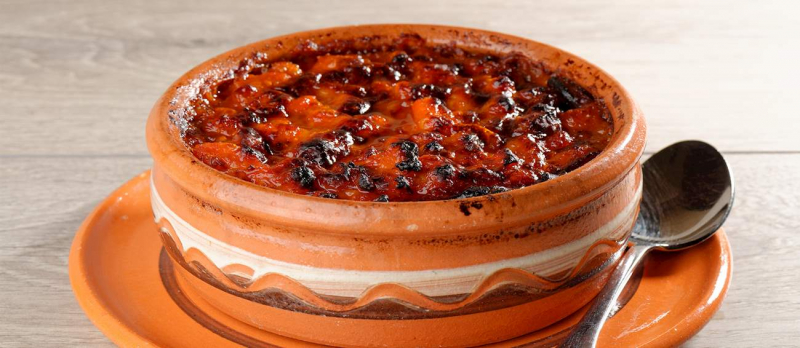
https://www.tasteatlas.com/ 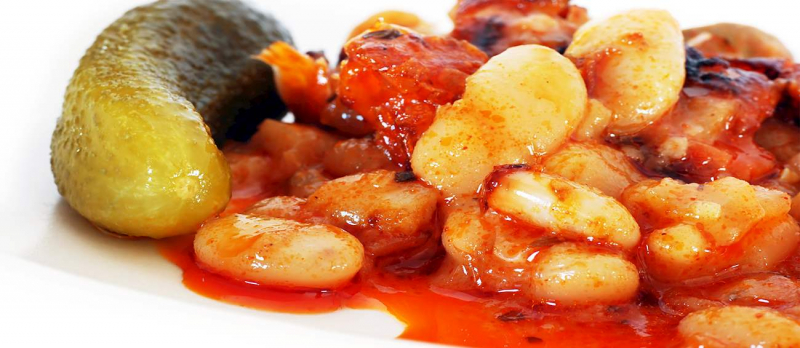
https://www.tasteatlas.com/ -
One of the most well-known and popular Serbian dishes is Ćevapčići. It's a traditional Serbian dish that's also popular in other Balkan countries like Bosnia and Herzegovina, Croatia, Slovenia, Albania, and Montenegro.
The term Ćevapčići refers to a type of grilled minced meat sausage. Recipes vary, but it's usually made with a combination of beef, lamb, mutton, and pork seasoned with garlic, paprika, black pepper, and salt. The heavily spiced meat mixture is formed into small sausages and grilled over an open flame.
Smokey and delicious, 5-10 sausages are served on a plate with various sides such as ajvar, kajmak, cottage cheese, sour cream, chopped onions, and red pepper. The sausages can also be stuffed into lepinja flatbread and consumed as a sandwich.
Try this dish at least once if you plan a trip to Serbia in the future. Your trip will not be complete unless you try this dish. Many visitors are pleasantly surprised by its distinct flavor and report having a pleasant experience with it.
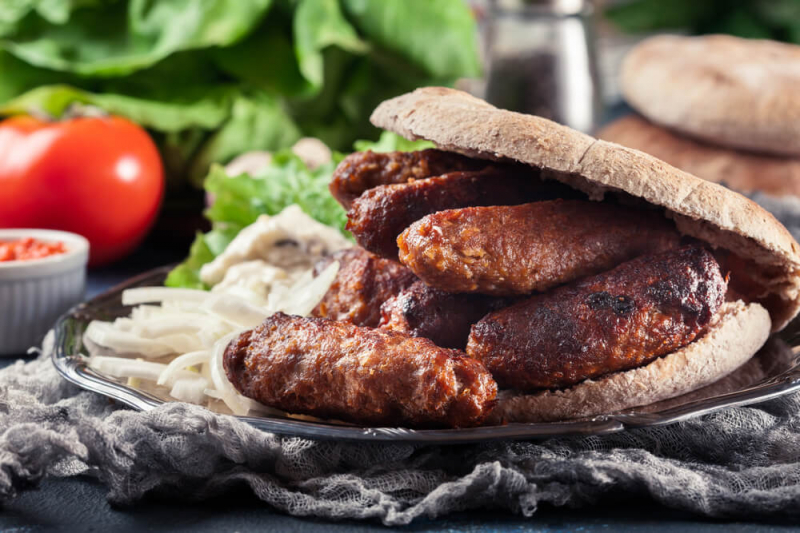
https://www.tasteatlas.com/ 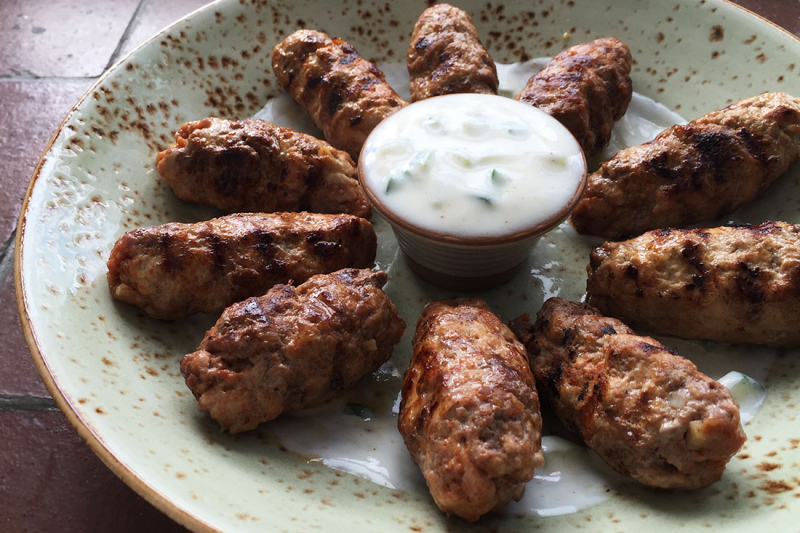
https://www.tasteatlas.com/ -
Pljeskavica, also known as the Serbian hamburger, is a flat, round patty made from minced beef, pork, or veal, or a combination of the three, with seasonings such as paprika, salt and pepper, and, in some cases, finely minced onions and garlic.
It is a simple dish that is difficult to master due to the importance of the meat-to-fat ratio in the preparation process. The word pljeskavica comes from the word pljeskati, which means to clap, because this is the motion made when forming the patties, which are then grilled on both sides to a smoky brown color, with typical grill marks on both sides.
Traditionally, the meat is then placed inside a thick flatbread called lepinja, which is just as important as the meat - it should be moist, springy, and warm, not dry, cold, or crumbly. The ideal pljeskavica is juicy, perfectly spiced, and topped with kajmak–a rich, clotted, slightly salty, local cream cheese.
Along with kajmak, the ideal accompaniments to the meat are finely chopped fresh onions, bell peppers, or pickled vegetables known as turija, but the list of possible condiments is long, because pljeskavica pairs extremely well with a wide variety of ingredients.
There are also two major types of pljeskavica: gourmand's pljeskavica, which contains hot pepper flakes, tiny cheese cubes, and bacon pieces scattered throughout.
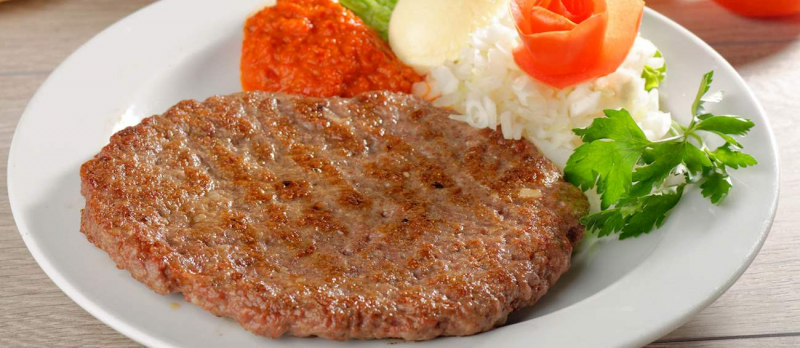
https://www.tasteatlas.com/ 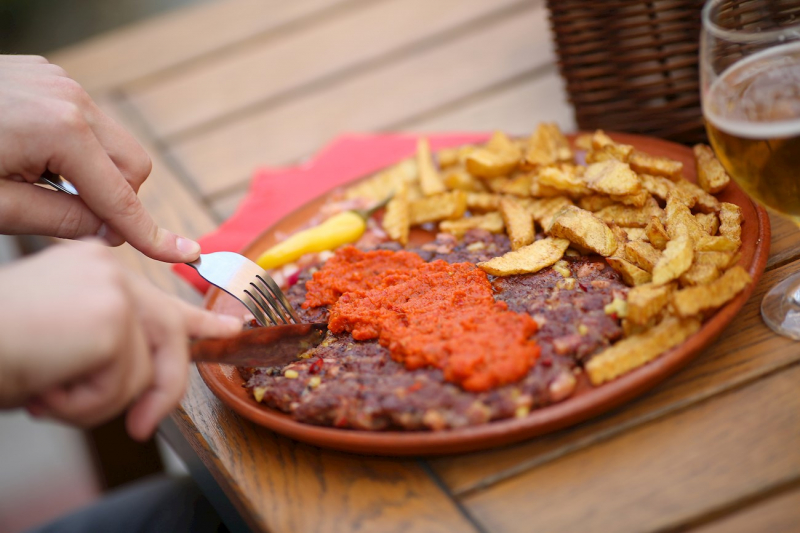
https://www.tasteatlas.com/ -
Leskovački roštilj is a traditional method of grilling meat that is regarded as the pinnacle of barbecue art in Serbia and beyond. According to local legend, the technique originated in Leskovac and was brought over from the Caucasus via Turkey, Greece, and Macedonia hundreds of years ago.
Although the exact preparation of the meat is a trade secret known only to Leskovac barbecue masters, the ground mixture traditionally consists of chopped, ground (first coarsely and then finely), seasoned beef that is allowed to sit for at least 48 hours before cooking.
Aside from the meat, the ground mixture usually includes chopped onions and ground pepper. The Leskovac grilling method involves cooking the meat on a grill over glowing coals, resulting in juicy flesh with a pleasant, smoky aroma.
Although beef is the most popular option, pork and chicken specialties are also available on a Leskovac grill. Pljeskavica (a Serbian-style burger or meat patty), ćevapi (small skinless sausages similar to kebabs), mukalica (mixed meat dish), smoked sausages, uštipci (meatballs), vešalica (pork steak in lambrequin), and skewered meat are among the traditional meat specialties served on the Leskovac grill.
Leskovac barbecue is more than just a cooking technique; it is an important part of local and national cuisine, tradition, and culture. This barbecue style has gained international recognition over the years, and restaurants serving Leskovac-style barbecue specialties can now be found in a variety of countries throughout Europe, the United States, and Australia.
In September, a barbecue festival called Roštiljijada is held in Leskovac to honor Leskovac barbecue. Leskovac barbecue became a protected regional brand in Serbia on November 1, 2018.
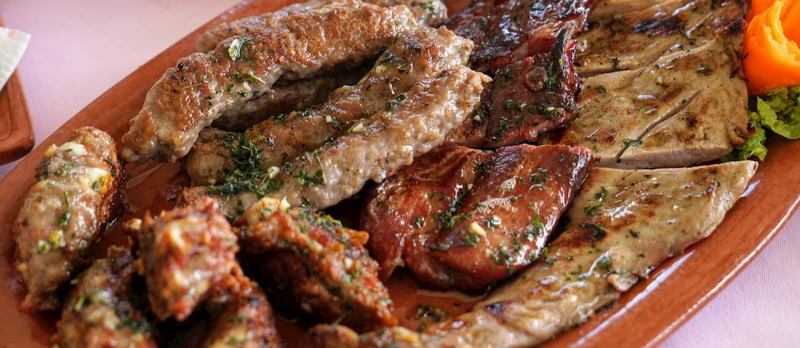
https://www.tasteatlas.com/ 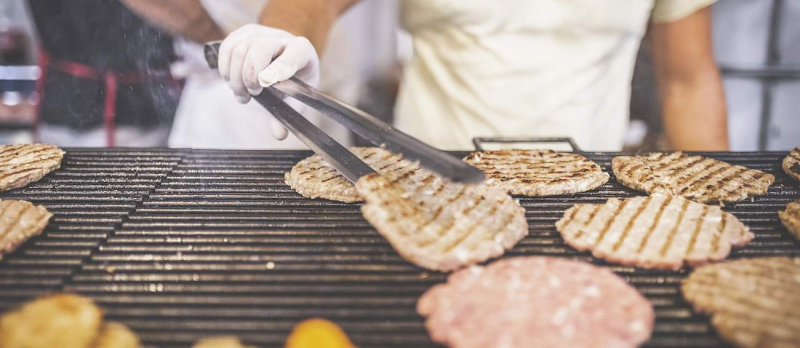
https://www.tasteatlas.com/ -
Čvarci, also known as ocvirki, is a traditional dish popular in Southeastern Europe and the Balkans. This type of pork rinds or cracklings is typically made at home by thermally extracting fat from lard. Typically, the lard is cut into blocks and fried in its own fat until it melts away and only the tough and crispy pork rind remains in the pot.
Čvarci are constantly stirred with large spoons during the process, and milk is frequently added to give them the color of caramel. Typically, salt is added to the mixture, but some cooks like to add garlic or onions. Čvarci are typically made in late autumn or winter, often during pig slaughter, and are served as a snack with bread and raw onions, and paired with beer or rakija on the side.
Čvarci is frequently used in savory snacks such as pogačica s čvarcima.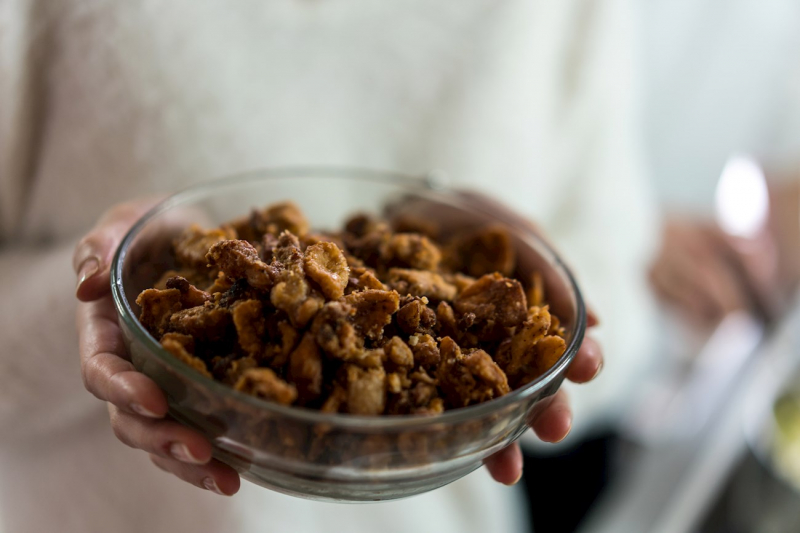
https://www.tasteatlas.com/ 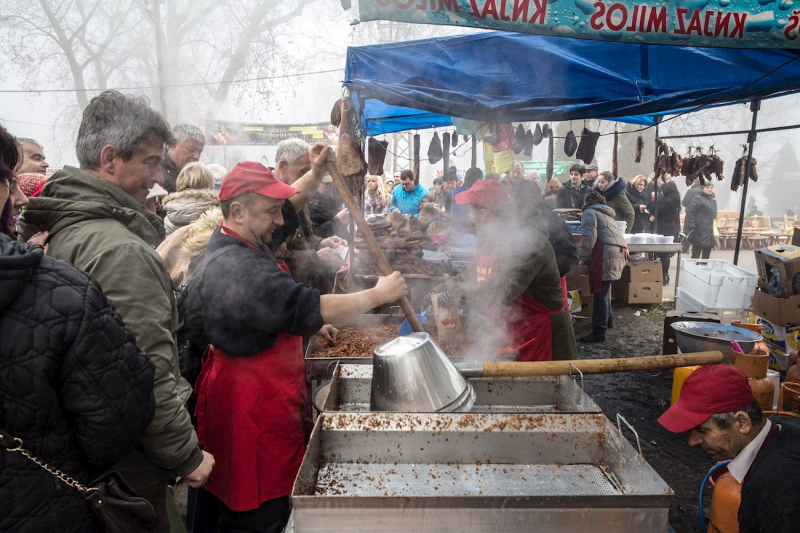
https://www.tasteatlas.com/ -
Rakija is a generic term for a variety of fruit brandies produced in several Balkan countries (Southeast Europe). This strong spirit is distilled from various fruits and is sometimes flavored or used as a base for liqueurs. The most common varieties are made from plums (šljivovica ), Williams pear (viljamovka), quinces (dunjevača ), apricots (kajsijevača ), apples (jabukovača ), grapes (lozovača/komovica ), and a variety of other fruits.
For centuries, Rakija has been present in the region. It is most commonly associated with Croatia, Serbia, Bosnia and Herzegovina, Montenegro, and North Macedonia. Although fruit brandies are produced in other European countries and regions, rakija is a household name in the Balkans and has a large following across all generations.
This potent spirit typically has an ABV of 40 to 60 percent. It is typically served neat in a shot glass, preferably well chilled. Rakija is primarily a social beverage that is drunk with friends or as a welcome drink. Locals also believe that rakija is a fantastic health remedy, and they use it to boost their immune system or alleviate minor medical issues.
Rakija can be a pure distilled spirit, but it is sometimes flavored with herbs and fruits. Many producers use rakija as a liqueur base, but these liqueurs, such as orahovac made with walnuts or honey-flavored medica, are technically liqueurs rather than fruit brandies.
Although rakija has a reputation for being a rough and harsh drink, many producers are attempting to break away from this stereotype by creating exceptional labels that they market as savoring and sipping beverages.
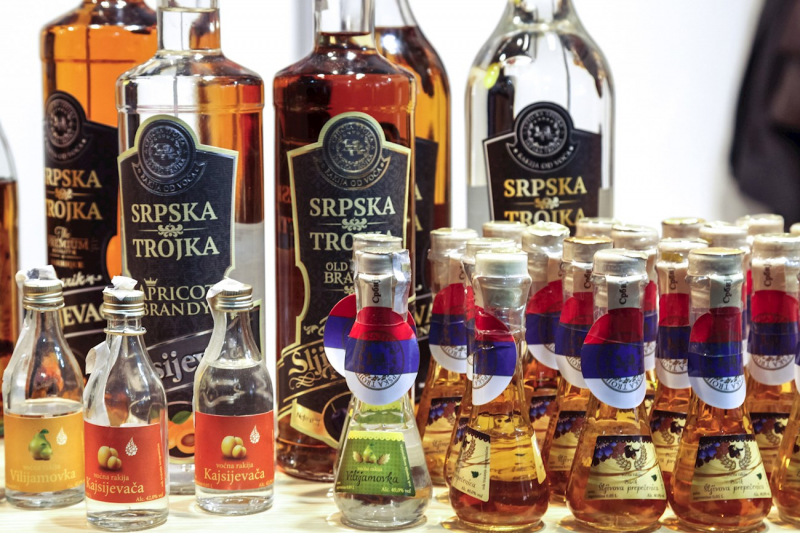
https://www.tasteatlas.com/ 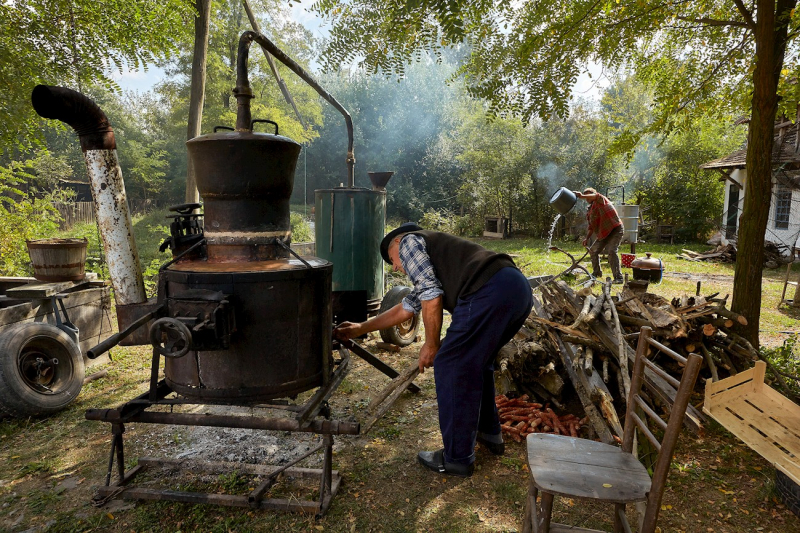
https://www.tasteatlas.com/ -
Slatko is a Serbian fruit preserve made up of distinct, usually whole pieces of fruit doused in a thick, sugary syrup. It can be made with quinces, watermelon rinds, cherries, raspberries, strawberries, blackberries, figs, grapes, plums, prunes, and even rose petals, while sugar-based syrups are frequently flavored with vanilla, lemon juice, cinnamon, or cloves.
Serbian slatko, which translates as "sweet," is a symbol of hospitality that is traditionally given as a warm welcome to guests. It is always served in small glass bowls, and guests should only take a spoonful of the preserve.
A portion of slatko is typically served with a glass of water and is followed by coffee and traditional plum brandy (rakija). Slatko is synonymous with Greek spoon sweets, but similar preserves can also be found in Montenegro and Bulgaria.
Lots of travelers highly recommended this delicious dish as one of the must-try foods in this country.
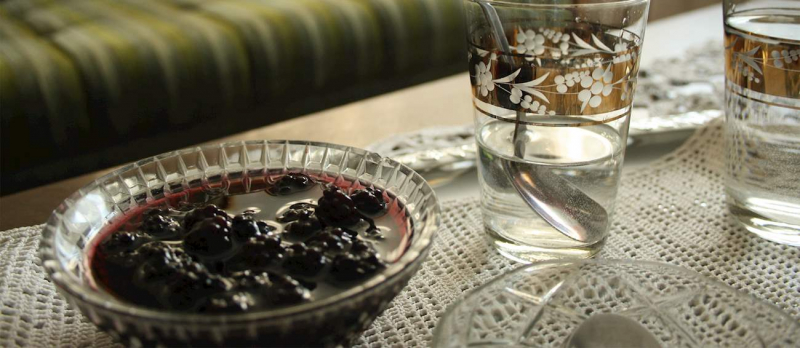
https://www.tasteatlas.com/ 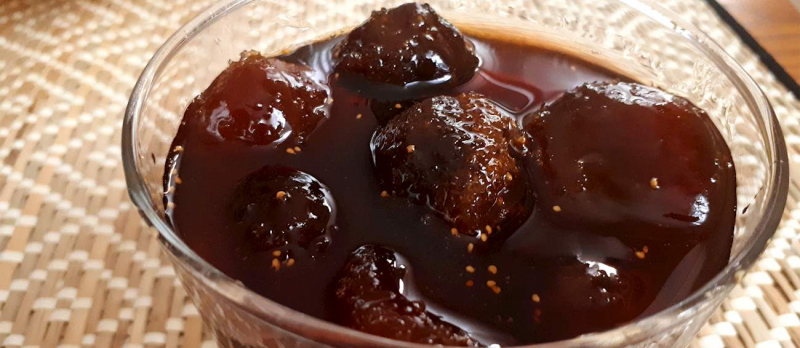
https://www.tasteatlas.com/ -
Šljivovica, also known as slivovitz in the United States, is a clear, potent drink made from fermented plums. Serbia, Croatia, Bosnia and Herzegovina, Slovenia, Hungary, Slovakia, Czech Republic, Bulgaria, Poland, and Romania are among the countries that produce it.
Šljivovica can be distilled once or multiple times, depending on tradition and desired taste profile, and it benefits from aging in oak, which can significantly improve its flavor, color, and aroma. The drink has a long history in each region where it is produced, and while it was previously associated with home production, there are now numerous regional brands available on the market.
Regardless of the variety, Šljivovica is always best served neat, preferably in a shot glass. In 2007, various Slavic states reached an agreement with the European Union that allowed each country to name and protect their version under the desired name. If you intend to visit Serbia, you should try it at least once.
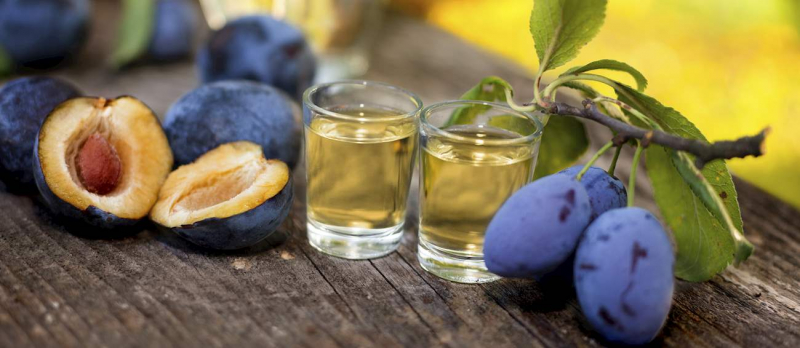
https://www.tasteatlas.com/ 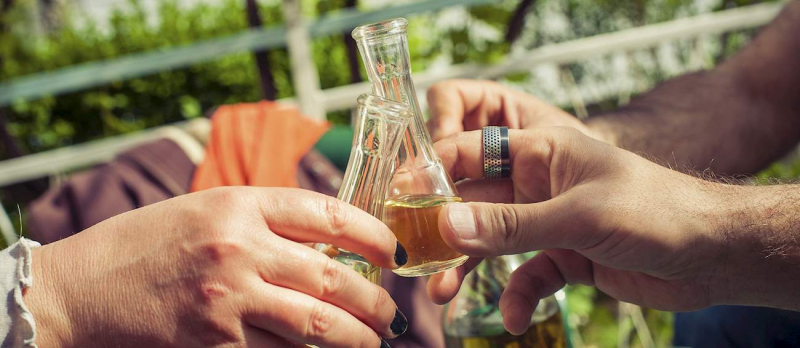
https://www.tasteatlas.com/ -
Krapfen were most likely the first European-style doughnuts to appear, and were quickly followed by similar varieties in other countries. Traditionally, these pastries are made with leavened dough that is deep-fried until golden and crispy on the outside while remaining soft, light, and airy on the inside.
Though krapfen can be served plain, they are most commonly filled or topped with jams, vanilla or chocolate custards, and powdered sugar or chocolate drizzled on top. The word krapfen dates back to the 9th century, and recipes in German can be found as far back as the 14th century.
Sweet versions of the pastry became popular, and they have remained closely associated with Carnival, the festive period preceding Christian Lent. During the Carnival, one krapfen in a batch filled with jam and fruit preserves may contain a mustard filling as a prank.
Doughnuts are thought to have spread throughout many Central European countries, which adopted the technique but gave it different regional names. As a result, krapfen is also known as Berliner, pfannkuchen, faschingskrapfen, krebbel, or kreppel in Germany.
They are known as pączki or krepel in Poland, fánk in Hungary, šišky in Slovakia, and koblihy in the Czech Republic. In Slovenia, they are known as krofi, whereas in Croatia, Bosnia and Herzegovina, and Serbia, they are known as krofne or krafne.
In St. Petersburg, Russia, the doughnuts are known as pyshki (either ring-shaped or without a hole), and a local café has been serving the original recipe since the 1960s.

https://www.tasteatlas.com/ 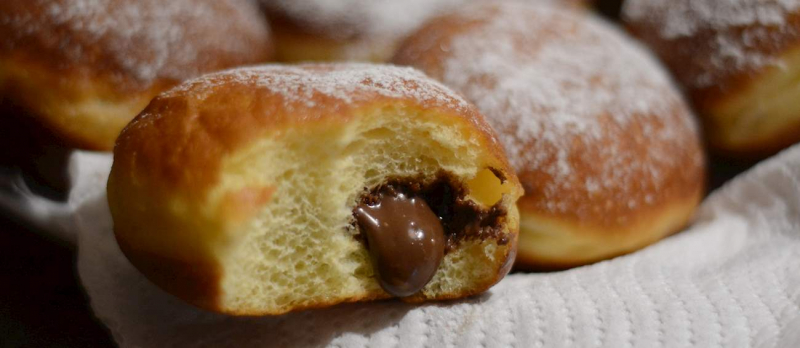
https://www.tasteatlas.com/ -
Popara, the Balkan version of bread mash, is an ancient dish that has long been valued as a quick and easy way to use up leftover bread while also feeding the entire family. Because it is eaten in so many countries throughout the region, there are numerous ways to prepare it.
Bread, diced or torn into smaller pieces, and liquid, usually milk, water, or tea, that is used to blend the bread into a soft mass, are the two essential ingredients. To make a more substantial meal, the liquid is usually combined with butter, vegetable oil, or lard.
The bread can be briefly fried in the liquid and fat mixture, and in some versions, the heated mixture is poured over the bread and stirred until thoroughly blended. Popara can be completely homogeneous and creamy, or it can have a coarse consistency filled with chewy bread pieces, depending on tradition and preference.
Because plain popara has a mild and neutral flavor, it can be prepared both savory and sweet. Onions, garlic, full-fat cream, fresh cottage cheese, ground red pepper, or sugar in the sweet popara are all common additions to this nutritious meal.
It is difficult to pinpoint the exact location of the origin of this simple and filling dish, but it is believed that it was invented out of necessity, during times of great adversity, when many ingredients were scarce or difficult to obtain. Popara is still a popular breakfast dish in many Balkan countries and regions today..
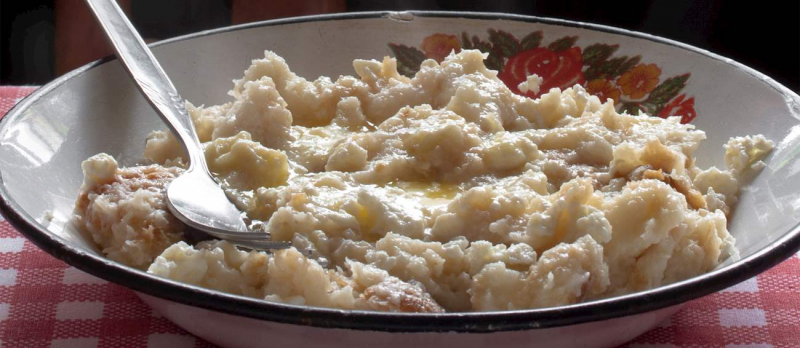
https://www.tasteatlas.com/ 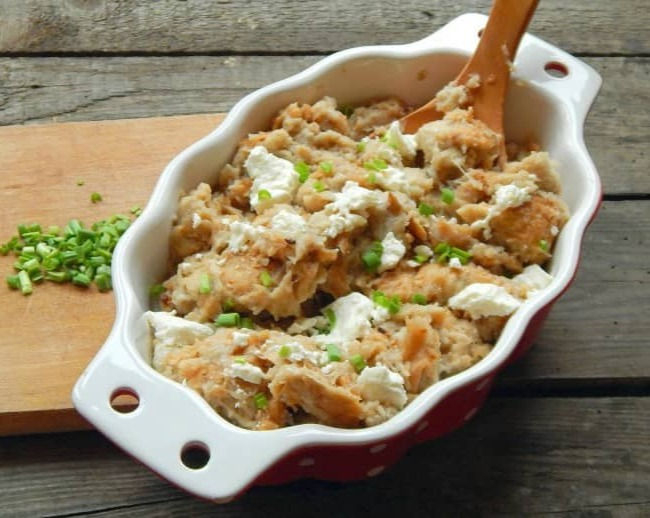
it.coffeetimewithlena.com -
Viljamovka is a type of fruit brandy (rakija) made from the Williams pear. This aromatic and mellow spirit is produced and consumed in a number of Balkan countries. It is widely regarded as the best fruit brandy produced in the region.
Viljamovka is distilled from fresh, ripe pears that have been fermented. As a result, the spirit is clear and colorless, with an intense pear aroma, mellow flavor, and a long, warming finish. Viljamovka is typically consumed as an aperitif.
It should always be served very cold. Some producers leave whole pears inside the bottle, which is accomplished by placing the bottle on the branch while the fruit is still young and then allowing it to grow and ripen inside the bottle. After that, the fruit is removed, and the bottle is removed and filled with distilled brandy.
Other types of pear brandies are made, but they are usually referred to by the generic name krukovaa—kruka translates as pear.

https://www.tasteatlas.com/ 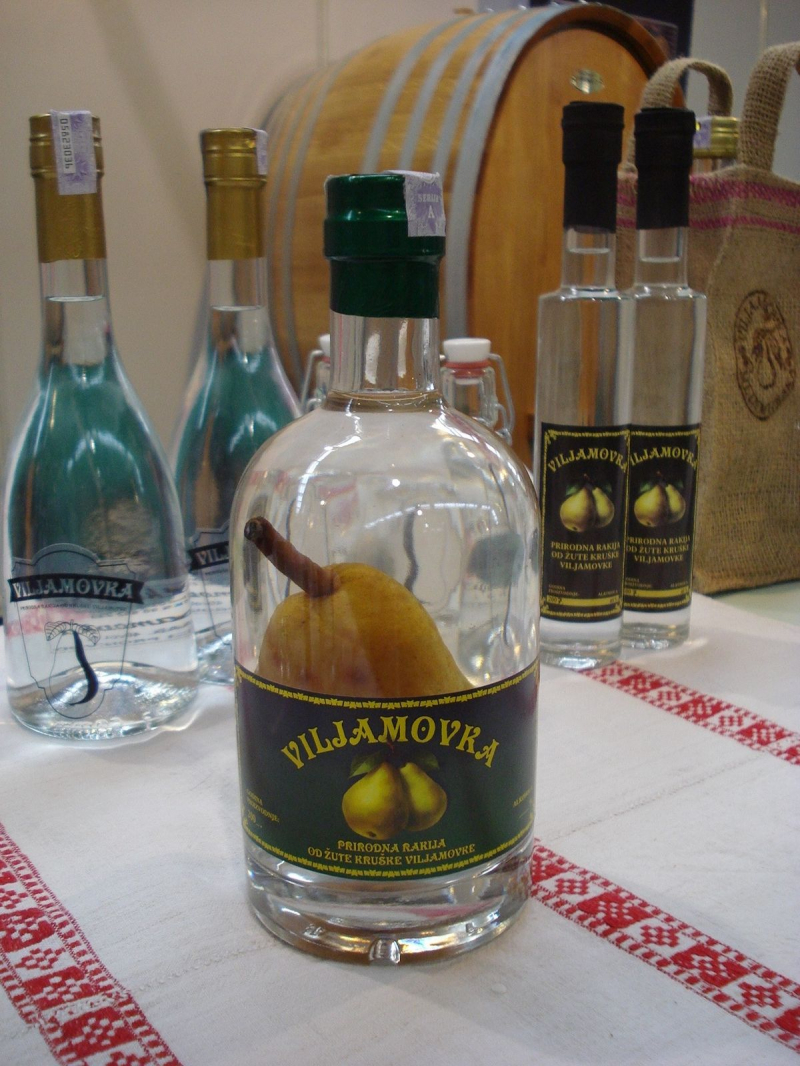
commons.wikimedia.org


















